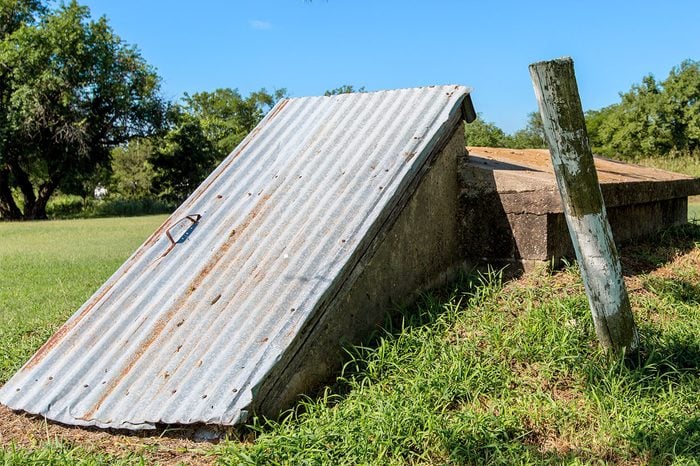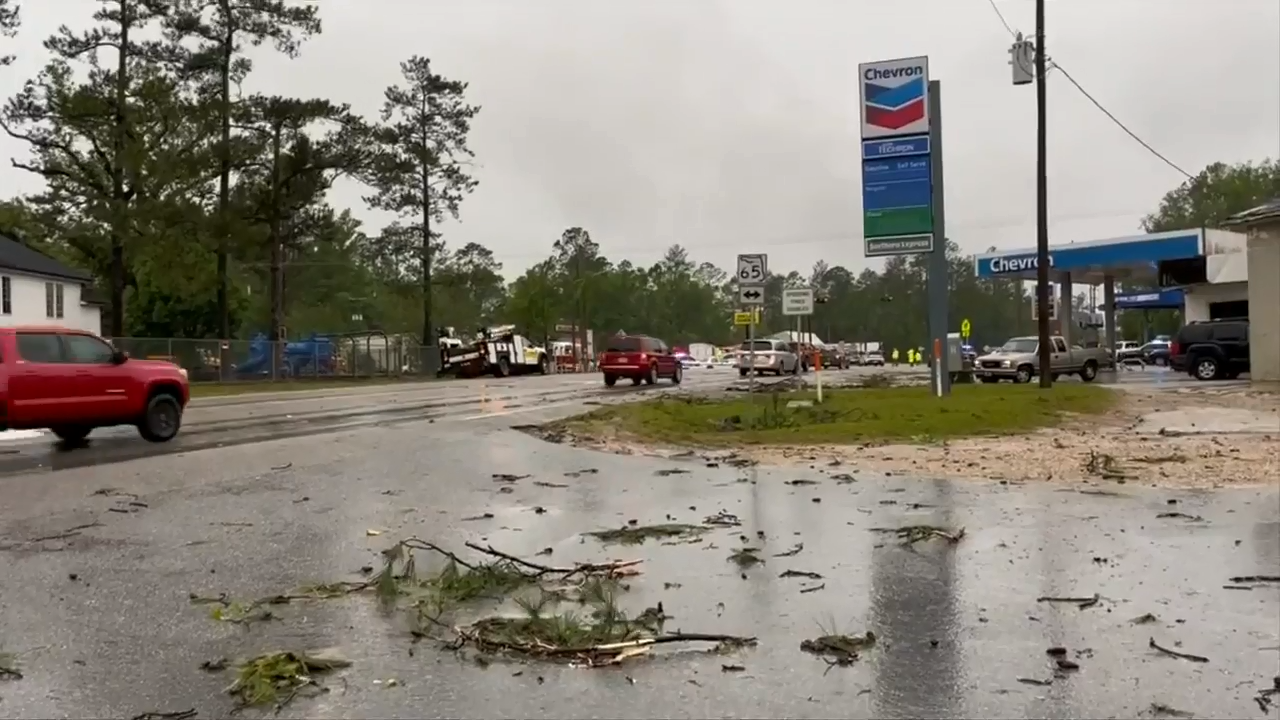How To Stay Safe During Fast-Moving Storms With High Winds

Table of Contents
Fast-moving storms with high winds can strike without warning, causing significant damage and posing serious threats to life and property. Understanding how to prepare and react during these severe weather events is crucial for ensuring your safety and the safety of your loved ones. This guide will provide essential steps to stay safe during such dangerous conditions, covering preparation before the storm, safety measures during the storm's onslaught, and crucial actions to take after the high winds subside.
<h2>Before the Storm: Preparation is Key</h2>
Proactive preparation is paramount when facing the potential threat of fast-moving storms with high winds. Failing to prepare adequately can significantly increase your risk of injury or property damage. Let's explore essential pre-storm steps.
<h3>Creating a Family Emergency Plan</h3>
A well-defined family emergency plan is your first line of defense against the chaos of a fast-moving storm. This plan should detail communication strategies, shelter locations, and emergency supplies.
- Establish a communication plan: Designate a primary and secondary out-of-area contact person. Determine a family meeting point in case of separation. Ensure everyone has access to updated contact information.
- Identify a safe room: Choose a room in your home that's interior, away from windows and exterior walls – this will offer the best protection from flying debris during high winds.
- Prepare an emergency kit: Stockpile essential supplies, including ample water (one gallon per person per day for at least three days), non-perishable food, a well-stocked first-aid kit, necessary medications, flashlights, batteries, a battery-powered radio, and blankets. Consider including important documents in waterproof containers.
- Secure loose outdoor objects: Fast-moving storms with high winds can transform everyday objects into dangerous projectiles. Secure or bring indoors anything that could be blown around: patio furniture, garbage cans, grills, and garden decorations. Trim trees and shrubs near your home to minimize the risk of falling branches. This preventative measure significantly reduces the potential for damage caused by fast-moving storms with high winds.
<h3>Securing Your Home</h3>
Protecting your home's structure is vital for mitigating damage from fast-moving storms with high winds. Strengthening vulnerable areas will limit the impact of strong winds.
- Reinforce windows and doors: Consider installing storm shutters or boarding up windows and doors to prevent them from shattering under the pressure of high winds. Reinforce garage doors, as they're often a weak point in a home's structure during severe weather.
- Trim trees and shrubs: Regularly maintain trees and shrubs around your house. Overgrown vegetation can easily be uprooted and cause considerable damage to your property during fast-moving storms with high winds.
- Protect your car: Park your vehicle in a garage if possible. If a garage isn't available, park it away from trees and other structures that could fall during the storm.
<h2>During the Storm: Staying Safe Indoors</h2>
Once the storm hits, your focus should be on staying safe and remaining calm. Following these steps can significantly reduce your risk.
<h3>Finding Shelter</h3>
The safest place during a fast-moving storm with high winds is indoors, away from windows and exterior walls.
- Stay away from windows: Avoid areas with large windows or glass doors. Flying debris poses a significant threat during high winds.
- Move to the lowest level of your home: If possible, move to a central interior room on the lowest level of your home. This offers the greatest protection from high winds and flying debris associated with fast-moving storms.
- If in a mobile home, seek alternate shelter immediately: Mobile homes are highly vulnerable during high winds. Evacuate to a sturdy building or designated shelter if you live in a mobile home.
<h3>Staying Informed</h3>
Staying updated on the storm's progress is essential during a fast-moving storm with high winds.
- Monitor weather reports and alerts: Keep your radio or television tuned to weather reports for updates on the storm's path and intensity. Utilize reliable weather apps for real-time information.
- Have multiple ways to receive warnings: Don't rely on a single source for weather alerts. Diversify your sources, including radio, television, and weather apps, to ensure you receive timely warnings.
- Avoid using electronic devices during power outages: Using electronics during a power outage increases the risk of electrical shock.
<h2>After the Storm: Assessing the Damage and Next Steps</h2>
Once the immediate danger has passed, carefully assess the damage and take appropriate action.
<h3>Checking for Injuries</h3>
Prioritize checking for injuries after the storm passes.
- Check yourself and others for injuries: Carefully examine yourself and your family members for injuries. Provide first aid as needed.
- Seek professional medical help if necessary: Don't hesitate to contact emergency services if anyone has sustained serious injuries.
<h3>Assessing Property Damage</h3>
Assess property damage cautiously, prioritizing safety.
- Be cautious when entering damaged buildings: Inspect your home for structural damage before entering. If there's significant damage, contact professionals for assessment.
- Report downed power lines and other hazards immediately: Downed power lines are extremely dangerous. Contact your local utility company and emergency services immediately.
- Take photos of damage for insurance purposes: Thoroughly document any damage to your property for insurance claims.
<h2>Conclusion</h2>
Preparing for fast-moving storms with high winds is crucial for safeguarding your life and property. This involves meticulous pre-storm preparations, such as creating a family emergency plan and securing your home, followed by adopting safe practices during the storm, including finding proper shelter and staying informed. Post-storm, prioritize checking for injuries and carefully assessing property damage. By implementing these safety measures and staying informed, you can significantly reduce your risk during fast-moving storms with high winds. Don’t wait until the next storm; start planning your safety strategy today. Learn more about effective preparations for fast-moving storms with high winds and protect your family.

Featured Posts
-
 The Decamerons Lou Gala Success Challenges And Future Prospects
May 20, 2025
The Decamerons Lou Gala Success Challenges And Future Prospects
May 20, 2025 -
 Damaging Winds And Fast Moving Storms A Comprehensive Guide
May 20, 2025
Damaging Winds And Fast Moving Storms A Comprehensive Guide
May 20, 2025 -
 Festival Da Cunha Em Manaus Isabelle Nogueira Apresenta Evento Com Shows Cultura E Imersao Na Amazonia
May 20, 2025
Festival Da Cunha Em Manaus Isabelle Nogueira Apresenta Evento Com Shows Cultura E Imersao Na Amazonia
May 20, 2025 -
 Bundesliga Mainzs Dramatic Turnaround Against Rb Leipzig Thanks To Burkardt And Amiri
May 20, 2025
Bundesliga Mainzs Dramatic Turnaround Against Rb Leipzig Thanks To Burkardt And Amiri
May 20, 2025 -
 Get To Know The Eurovision Song Contest 2025 Participants
May 20, 2025
Get To Know The Eurovision Song Contest 2025 Participants
May 20, 2025
